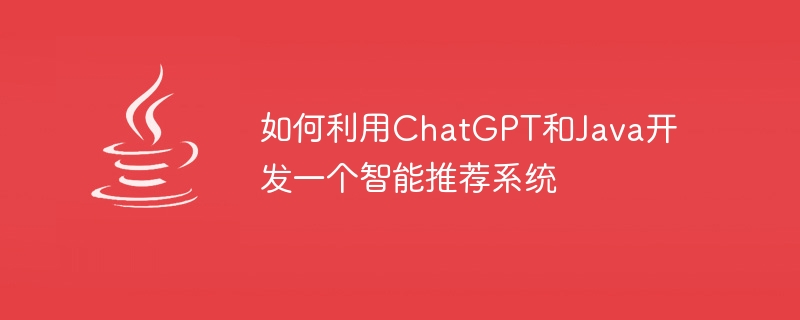

How to use ChatGPT and Java to develop an intelligent recommendation system
The intelligent recommendation system is a technology that has been widely used in various fields in recent years. It analyzes data to quickly and accurately recommend content and products that may be of interest to users based on their historical behavior and personal preferences. ChatGPT is a powerful natural language processing model developed by OpenAI that can generate high-quality conversational content. This article will introduce in detail how to develop an intelligent recommendation system using Java and ChatGPT, and provide specific code examples.
import java.io.*;
import java.net.*;
public class ChatServer {
public static void main(String[] args) throws IOException {
ServerSocket serverSocket = new ServerSocket(9999);
Socket clientSocket = serverSocket.accept();
BufferedReader in = new BufferedReader(new InputStreamReader(clientSocket.getInputStream()));
PrintWriter out = new PrintWriter(clientSocket.getOutputStream(), true);
String inputLine;
while ((inputLine = in.readLine()) != null) {
// 调用ChatGPT模型生成回复
String reply = generateReply(inputLine);
out.println(reply);
}
}
private static String generateReply(String input) {
// 调用ChatGPT模型生成回复的代码
// ...
return "这是ChatGPT生成的回复";
}
}First of all, OpenAI’s ChatGPT library needs to be introduced into the project. The Java code base can be downloaded from OpenAI’s GitHub and added to the project.
import ai.openai.gpt.*;
public class ChatServer {
// ...
private static String generateReply(String input) {
Model model = Model.builder()
.architecture(Architecture.GPT2)
.modelDirectory(new File("/path/to/model")) // ChatGPT模型的路径
.tokenizer(Tokenization.REGEX) // 根据需要选择合适的分词器
.build();
CompletionResult completionResult = model
.complete(input, CompletionPrompt.builder().build(), 3, 10);
return completionResult.getChoices().get(0).getText();
}
}In the above code, we first create a model object, specify the use of GPT2 architecture, and specify the path of the ChatGPT model. Then, call the model's complete method to generate the reply.
import ai.openai.gpt.*;
public class ChatServer {
// ...
private static String generateReply(String input) {
// 根据用户的输入和ChatGPT生成的回复获取用户的需求
String userRequest = extractUserRequest(input);
// 根据用户需求调用推荐算法生成推荐结果
List<String> recommendedItems = getRecommendedItems(userRequest);
// 返回推荐结果
return "这是ChatGPT生成的回复," + recommendedItems.toString();
}
private static String extractUserRequest(String input) {
// 根据ChatGPT生成的回复提取用户的需求
// ...
return "用户需求";
}
private static List<String> getRecommendedItems(String userRequest) {
// 使用推荐算法根据用户需求生成推荐结果
// ...
return List.of("推荐结果1", "推荐结果2", "推荐结果3");
}
}In the above code, we first extract the user's needs based on the responses generated by ChatGPT, then call the recommendation algorithm to generate recommended results based on this needs, and splice the recommended results into the responses generated by ChatGPT and return to users.
To sum up, we can use Java and ChatGPT to quickly develop an intelligent recommendation system. By building a chat interface, using ChatGPT to generate replies and integrating the logic of the recommendation system, you can provide users with personalized recommendation results. Such a system can not only be used in product recommendation, content recommendation and other fields, but can also be further expanded and optimized to meet the needs of different scenarios.
The above is the detailed content of How to use ChatGPT and Java to develop an intelligent recommendation system. For more information, please follow other related articles on the PHP Chinese website!
